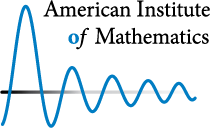1. Problems in Low Forcing
"Low Forcing" refers to the method of side conditions, specifically where the side conditions are elementary submodels of some large transitive structure.-
Let $\mathbb{C} = (C,\le)$ be a linear order of size $\kappa$ and consider its Cartesian square under the ordering $(x_1,y_1) \le (x_2,y_2)$ iff $x_1 \le x_2$ and $y_1 \le y_2$. $\mathbb C$ is a Countryman line if this Cartesian square is the union of less than $\kappa$-many chains (i.e. linearly ordered subsets).
Problem 1.05.
[Justin Moore] Is it consistent (with the continuum hypothesis) that there is a minimal $\aleph_2$-Countryman line—that is, an $\aleph_2$-Countryman line that order-embeds into all others? -
Two linear orders $\mathbb{C}_1$ and $\mathbb{C}_2$ are near if there is another linear order $\mathbb{C}_0$ that embeds into both of them. $\mathbb{C}_1$ and $\mathbb{C}_2$ are co-near if there is a linear order embedding into $\mathbb{C}_1$ and $\mathbb{C}_2^\ast$, where $\mathbb{C}_2^\ast$ is the reverse of $\mathbb{C}_2$.
Problem 1.1.
[Justin Moore] Is it consistent with the continuum hypothesis that any two $\aleph_2$-Countryman lines are near or co-near? -
Strong homology is a homology theory satisfying the Eilenberg-Steenrod axioms and is invariant under strong shape.CH and PFA both imply a negative answer to this question. It is likely that a positive answer to this question implies that $\mathfrak{d}<\aleph_\omega$, where $\mathfrak{d}$ is the dominating number of the continuum.
Problem 1.15.
[Justin Moore] Is strong homology consistently additive for closed subspaces of Euclidean space, or more generally for locally compact metric spaces? -
$\mathbb A = \langle A_f : f \in \omega^\omega \rangle$ is the following inverse system of abelian groups:
$$ A_f = \bigoplus_{n \in \omega} \bigoplus_{i < f(n)} \mathbb Z = \bigoplus_{n \in \omega} {\mathbb Z}^{f(n)}$$
Let ${\mathbb Z}^{\omega \times \omega}/fin$ be ${\mathbb Z}^{\omega \times \omega}$ modulo finite equivalence, let $G_f = \prod_{n \in \omega} {\mathbb Z}^{f(n)}/fin$, and consider the chain complex
$${\mathbb Z}^{\omega \times \omega}/fin \xrightarrow{\delta} \prod_{f_0 \in \omega^\omega} G_{f_0} \xrightarrow{\delta} \prod_{f_0 \le f_1} G_{f_0} \xrightarrow{\delta} \prod_{f_0 \le f_1 \le f_2} G_{f_0} \xrightarrow{\delta} \ldots$$
where
$$\delta_s(f_0,f_1,\ldots,f_n) = \sum^n_{i = 0}(-1)^i s(f_0,\ldots,\hat{f}_i,\ldots,f_n)$$
for $s \in \prod_{f_0 \le \ldots \le f_{n-1}} G_{f_0}$.
We define $\lim^p \mathbb A \cong \ker(\delta^p)/\text{im}(\delta^{p-1})$.If strong homology is consistent for locally compact metric spaces, then the answer to this question is positive.Problem 1.2.
[Justin Moore] Is it consistent to have $\lim^p \mathbb{A} = 0$ for all $p$? -
Problem 1.25.
Is it consistent that there is a poset which adds a club in $\omega_3$ which contains no infinite ground model subset over a model of GCH? -
Problem 1.3.
Is there a large cardinal hypothesis that proves the bounded forcing axiom for Namba forcing? -
Problem 1.35.
Can Namba forcing be iterated with side conditions? Does this work if we replace Namba forcing with a forcing satisfying Shelah’s $S$-condition? -
Problem 1.4.
Assume CH. Is there a strongest forcing axiom of $\sigma$-closed posets meeting $\aleph_2$-many dense sets? What if we do not assume CH? -
Conjecture 1.45.
The following is inconsistent: “For every $\Sigma_1$ statement $\varphi$ with $\aleph_1$ and $\aleph_2$ as parameters, if $\varphi$ can be forced by an $\aleph_1, \aleph_2$-preserving forcing, then $\varphi$ holds.” -
If $X$ is a topological space, let $s(X)=\sup\{|Y|:Y \text{ is a discrete subspace of }X\}$. It is a theorem that $|X| \le 2^{2^{s(X)}}$.The answer is negative under $\Diamond$, even for compact Hausdorff spaces. PFA implies that the answer is negative for $X$ with $s(X)=\aleph_0$. PFA also implies that $|X| \le 2^{\aleph_0}$ for every Hausdorff space with no uncountable discrete subspaces.
Problem 1.5.
[Stevo Todorčević] When can one obtain $|X|\le 2^{s(X)}$? -
Problem 1.55.
[Stevo Todorčević] Do any of the analogs of PFA at $\aleph_2$ give us $|X| \le 2^{\aleph_1}$ for every Hausdorff space with no discrete subspaces of size $\aleph_2$? -
It is a fact that a compact Hausdorff space $X$ is countably tight if and only if $X$ contains no $\omega_1$-free sequence.
Problem 1.6.
[Stevo Todorčević] Suppose $X$ is a compact Hausdorff space of tightness $\aleph_1$ (i.e. there are no $\omega_2$-free sequences) and density $\aleph_1$. Is it true that $|X| \le 2^{\aleph_1}$? -
Under PFA, $1, \omega, \omega_1, \omega \times \omega_1$, and $(\omega_1)^{<\omega}$ are the cofinal types of directed sets of cardinality $\aleph_1$.
Problem 1.65.
[Stevo Todorčević] Under a given analog of PFA for $\aleph_2$, how many cofinal types of directed sets of cardinality $\aleph_2$ are there? -
$\kappa \rightarrow (\alpha,\beta)^n$ means that for every coloring $F:[\kappa]^n \rightarrow \{0,1\}$, then then there is either a homogeneous set $H_0$ of order-type $\alpha$ such that $F"H_0=\{0\}$, or else a homogeneous set $H_1$ such that $F"H_1=\{1\}$.It is known that PFA implies $\omega_1 \rightarrow (\omega_1,\alpha)^2$ for all $\alpha<\omega_1$.
Problem 1.7.
[Stevo Todorčević] Can $\omega_2 \rightarrow (\omega_2,\alpha)^2$ be deduced from one of the forcing axioms at $\aleph_2$. -
It is known under PFA that the gaps-spectrum of $P(\omega)/fin$ consists of $(\omega_1,\omega_1^\ast),(\omega_2,\omega^\ast)$, and $(\omega,\omega_2^\ast)$.
Problem 1.75.
[Stevo Todorčević] Assuming an appropriate generalization of PFA, determine the gaps spectrum of $P(\omega)/fin$.
Cite this as: AimPL: High and Low forcing, available at http://aimpl.org/highlowforcing.
